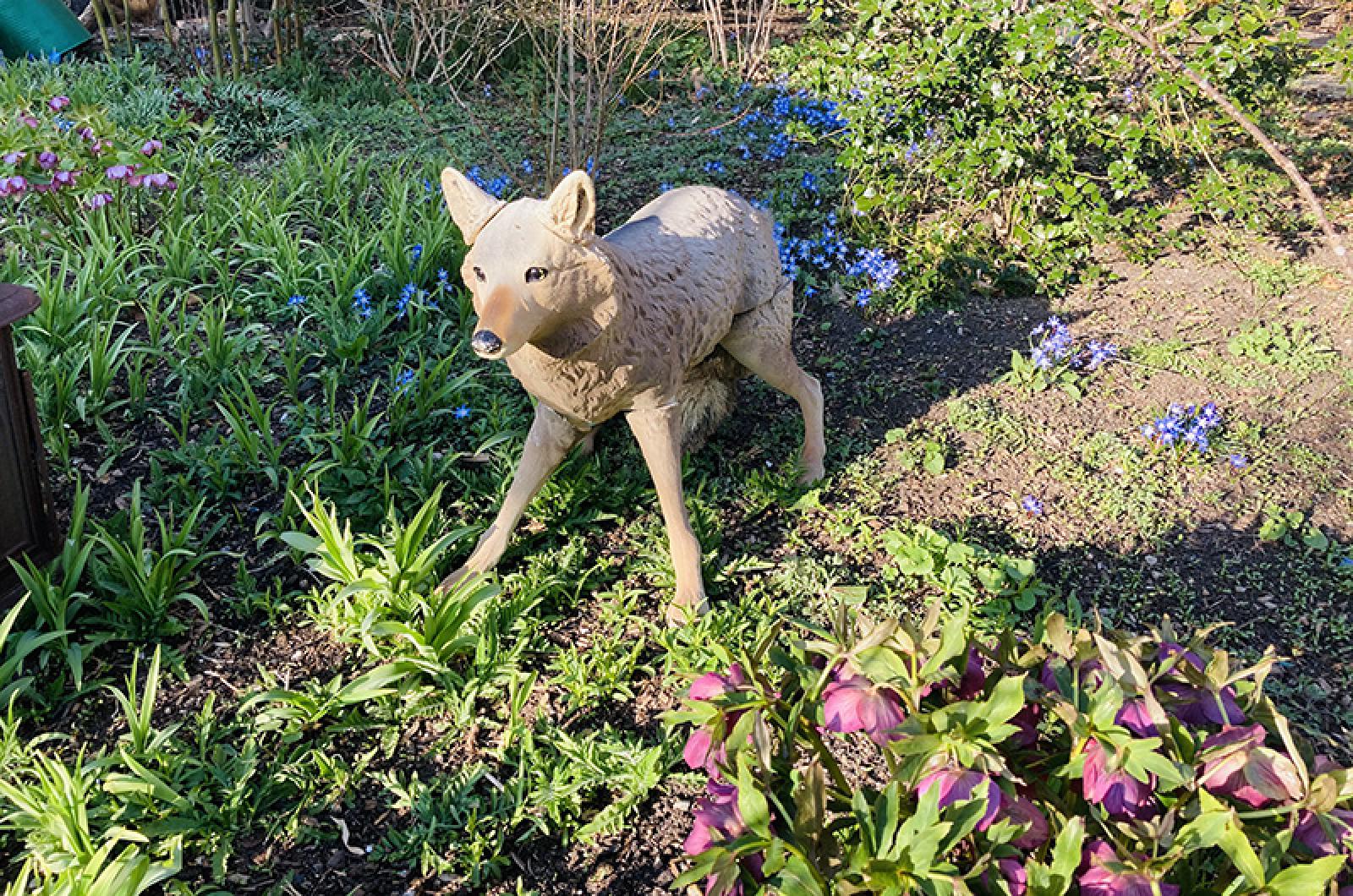It is the weird time of year for clothing decisions. The mornings are chilly so I dress accordingly for outdoor work. By mid-day many layers are left in the truck but by supper time a wood fire is in order. I actually have very little interest in the spring ritual of going back to work. I have so much of my own unattended tasks requiring my attention. So many little things could be addressed. I never cut the spent flowers from lilacs and rhododendrons and now they look shabby.
I noticed the Star Magnolia at the Olson place in North Tisbury. It’s just about to bloom while my own seems to be weeks away.
Last week I was sad to see the last of the snowdrops and crocuses but here we are and now the property is awash in puschkinia. This sweet little bulb has naturized all over the place. I cannot recall the actual planting of the originals. They are especially nice around the hellebores which are in all their Lenten glory. I wonder if they are still called Lenten Roses after Easter. Forgive my theological musings.
Both the sedum and daylillies have broken ground and have been eaten to the quick by Bambie and his extended family. I must have 20 Bobbex sprayers in various states of disrepair so I sprinkled some bulbtone around. It smells awful and hopefully will discourage nibbling. I never had deer problems back in the day before there were leash laws. The dog left outside at night was happily on duty. My old rescue would probably point a robber to the silver and go back to sleep.
Last week I mentioned my new yard art — a plastic coyote. Hopefully, it will scare away something. Violet’s photo this week does not do it justice.
There was an interesting article on the op-ed page of the New York Times recently. Titled What You May Not Know About the April Flowers by Margaret Renkl, it made the case that cultivation of non-native plants has skewed our experience of spring.
We have certain plants and flowers that we all associate with spring — forsythia, azalea, daffodils, tulips, flowering cherries, honeysuckle. None of them are native to North America. Her favorite spring bloomer is the barely noticeable serviceberry. We know it as shad here on the Vineyard. Different regions call it something else — Juneberry, Saskatoon, sugar plum and chuckley pear.
The writer encourages her readers to plant some natives on the property — pawpaws, red mulberries, Eastern red cedars, American hollies, red buds and native dogwoods. “What if each American landowner made it a goal to convert half of his or her lawn to productive native plant communities?” she asks.
Douglas W. Tallamy, in his book Nature’s Best Hope: A New Approach to Conservation That Starts in Your Yard, says “Even moderate success could collectively restore some semblance of ecosystem function to more than 20 million acres of what is now biological wasteland.”
Wow, I needed that burst of hope since the world situation seems, yet again, precarious. The toxic reservoir about to burst in Tampa, Fla. should convince Republicans that we need a huge overhaul of our infrastructure. I won’t hold my breath.







Comments
Comment policy »